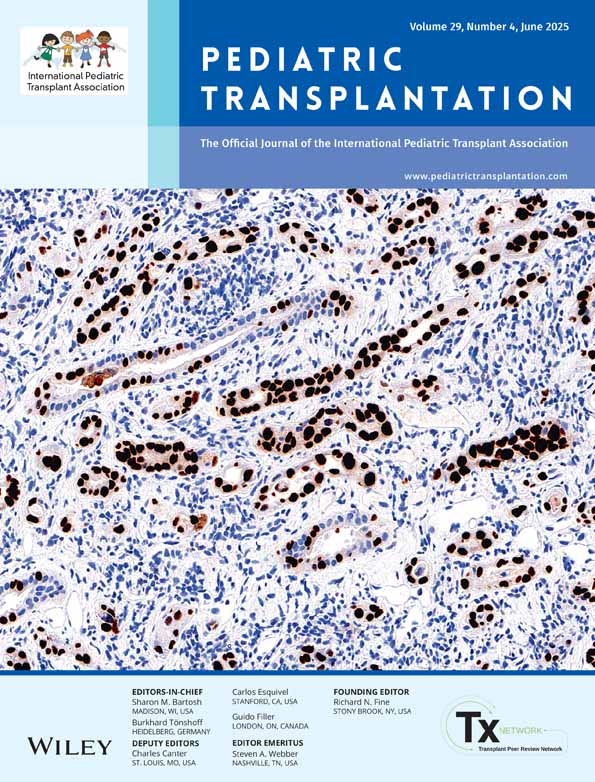Liver Transplantation in Primary Hyperoxaluria: A Single-Center 10-Year Experience
Funding: This study was supported by Shiraz University of Medical Sciences (Grant numbers 30367). Author Z.B. has received research support from Shiraz University of Medical Sciences.
ABSTRACT
Background
Primary hyperoxalurias (PHs) are rare inborn errors of metabolism caused by a deficiency of hepatic enzymes, leading to excessive urinary oxalate excretion and the overproduction of oxalate, which accumulates in various organs. If left untreated, PHs can cause serious morbidity, end-stage kidney disease (ESKD), and mortality. Liver transplantation (LT) is a recognized treatment option for children with these diseases. This study aimed to analyze the outcome of PHs disease post-LT from a single center in Iran.
Methods
This retrospective, single-center study was conducted at the Shiraz Transplant Center from 2012 to 2023, focusing on liver transplant recipients with PH. We evaluated long-term outcomes and post-transplantation results for both deceased donor liver transplantation (DDLT) and living donor liver transplantation (LDLT). Biochemical lab results (pre- and post-transplantation), perioperative data, surgical procedures, transplantation outcomes, and recipient and donor characteristics were reported. Kaplan–Meier survival analysis was used to assess graft and patient survival.
Results
33 recipients with LT (LDLT, n = 6; DDLT, n = 27) were included. The median age at the time of transplantation was 8 years (range: 3–18 years). Following liver transplantation, all of the patients had normalization of liver enzymes. Urine oxalate levels gradually decreased from 198 to 51 (< 45 mg/1.73 m2/day). Among the 33 patients, eight experienced episodes of acute rejection, and five developed chronic rejection. Eight patients underwent kidney transplantation before liver transplantation, while 21 patients initially received liver transplantation. 26 patients survived and remained in good health during a median follow-up period of 7 years (range: 1.5–11 years). For patients with PHs, the survival rates at 6 months, 1 year, 3 years, and 5 years were 100%, 97%, 94%, and 85%, respectively. The graft survival for patients was 100%, 100%, 97%, and 97% at 6 months, 1 year, 3 years, and 5 years, respectively.
Conclusions
PHs is a rare metabolic disorder, and LT significantly improves both survival and quality of life for affected patients. In our cohort, the majority of patients exhibited favorable long-term outcomes, along with a notable reduction in urine oxalate levels post-transplantation. However, challenges persist, including graft shortages and the risk of renal graft loss due to oxalosis, which continue to affect overall treatment outcomes. These findings highlight the importance of close monitoring and multidisciplinary care in managing PH patients' post-transplant.
Conflicts of Interest
The authors declare no conflicts of interest.
Open Research
Data Availability Statement
The data generated for this study are available upon reasonable request from the corresponding author.




